There I was, driving along, minding my own business, with a trunk full of groceries. Nothing special about the day or the road I was driving on. I’ve driven it a hundred times. I look down at my gauges, and see that I’m doing zero miles per hour.
Zero?
The wind was whipping past and I was passing someone in the lane beside me, and yet I was apparently doing 0 according to the speedometer. And then it suddenly sprung back to life. It worked for another mile and then was dead again.
Hmmf.
I assumed the problem was me and my penchant for changing gauges every few months. In Sharka, I’ve gone through a tach and a fuel gauge in the past four years. They just… broke. But the speedometer on Bucky was a different story. See, I did a bit of research before I tore my gauge cluster out. The internet message boards reported that there’s a speed sending unit that needs a bit of love from a soldering iron to make work again. Heat and vibration makes them come free after a 10 years or so.
Solder a couple wires? I can do that.
By the way, the sensor is rather spendy. $200ish from the cheap places online? Yikes. That’s a little high. I thought I’d try my luck with the melted metal first.
This is the object of today’s project. It’s a little generator in the passenger side (starboard/right side) of the transmission tail area. The second pic shows the location as best as I could. It’s near the middle of the catalytic converter.
YOU WANT TO ONLY JACK UP THE REAR OF THE CAR. I put all four corners in the air. A small amount of transmission fluid will come out of the hole after you remove the sender. You want the tail to be a bit higher than the nose. Just jacking up the back end will do that. Or you could have your jack stands staggered a bit.
If you jack up all four corners evenly, you will want to have a catch pan nearby. Not much oil leaks out maybe 1/8 of a liter. But it’s enough to ruin your shirt.
There’s not much room to work with, but there is enough. You could use a box end wrench or a thin socket combo. I’m using a thin 1/4″ drive ratchet and standard length socket. They were the perfect fit. One bolt holds the generator in the trans case. There’s not much to it.
The act of removing the little green cover will most likely remove the wires for you as well. They did for me. The green stuff is like a slightly gummy plastic. I was able to dig channels out of it for the wires with a very light application of an Xacto knife.
My reading online indicated that the wires weren’t soldered well at the factory. Too much silver in the solder or something and not enough heat? Very likely I “fixed” them the same bad way the robot did at the factory. I used some high-silver-content solder and only a 30W gun. But, to spoil the ending, it worked. Maybe it’ll stay working for another 10 years?
I’m not sure it makes a difference which terminal connects to which wire, but I marked them anyway. I’d hate to do all of this work and get something backwards.
To solder, I held the wires with a needle nose vice grip and the generator body with a panel clamp. Nothing special, just something to give me an extra pair of hands. I’m sure folks that regularly play with circuit boards will be laughing.
A little solder and a little silicone. That’s all you need to finish this off. I couldn’t get the green plastic to seal again without the silicone, but with it, the connection should be quite decent.
And that’s it! Plug the sensor back in and cross your fingers as you pull into the street from your driveway. I had no problems. Since doing this fix, I’ve added about 500 miles to my odometer. No bad speedometer behavior has been noticed since.

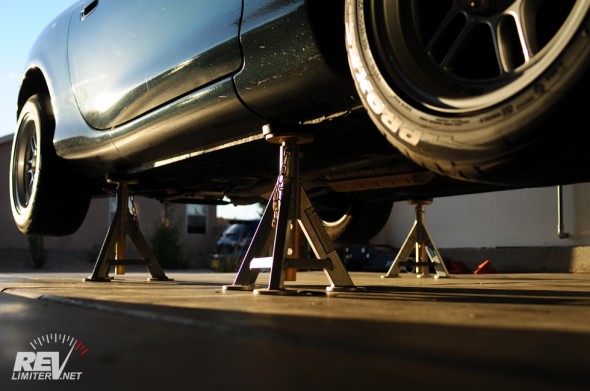
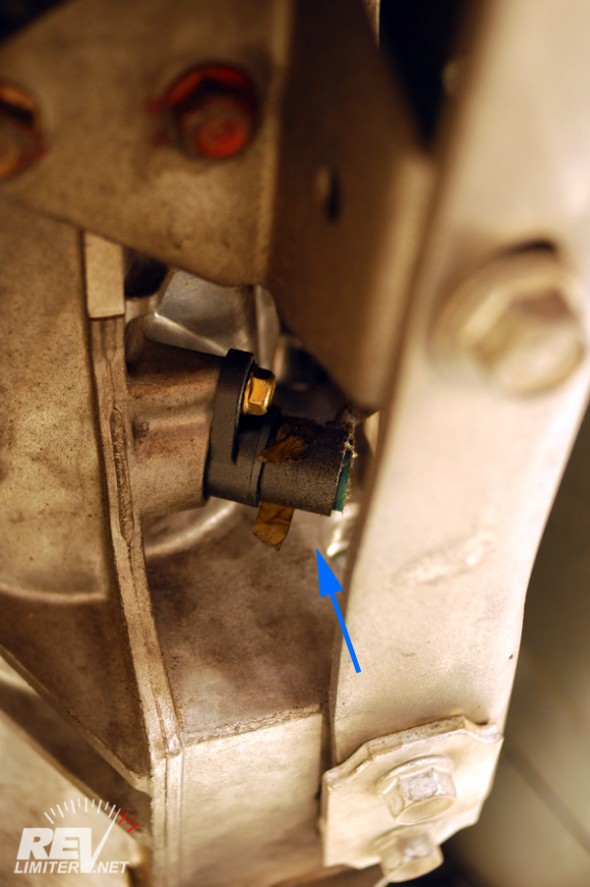
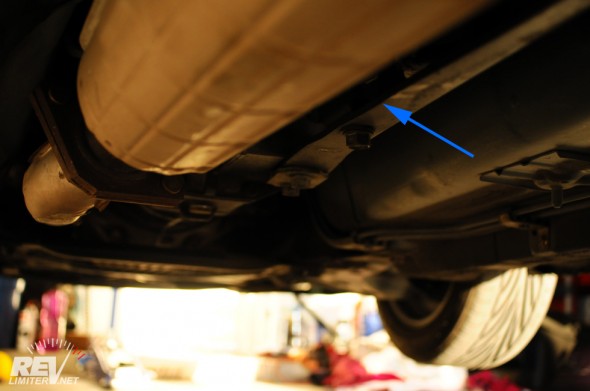
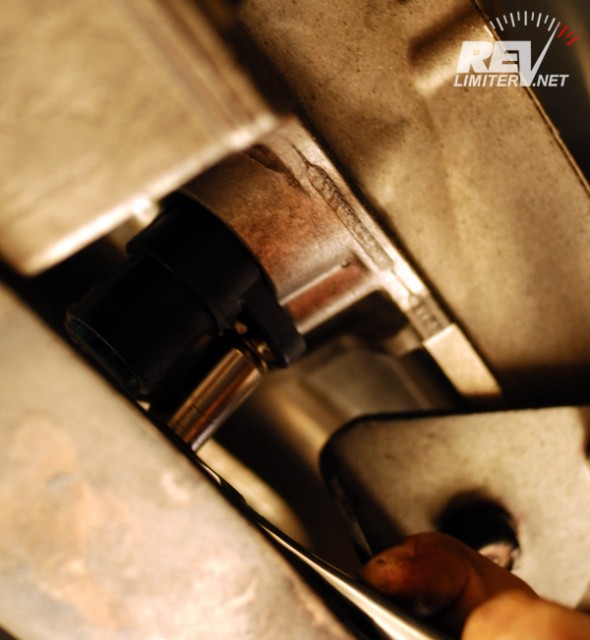
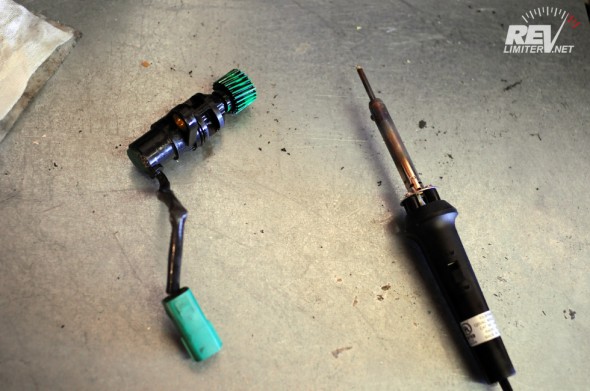
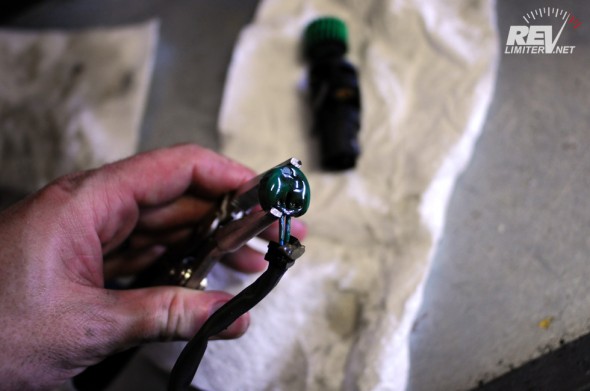
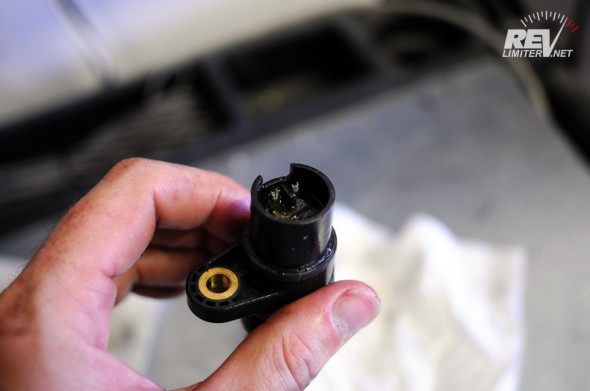
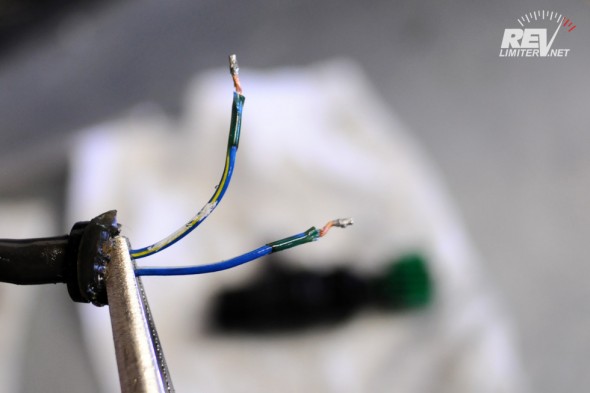
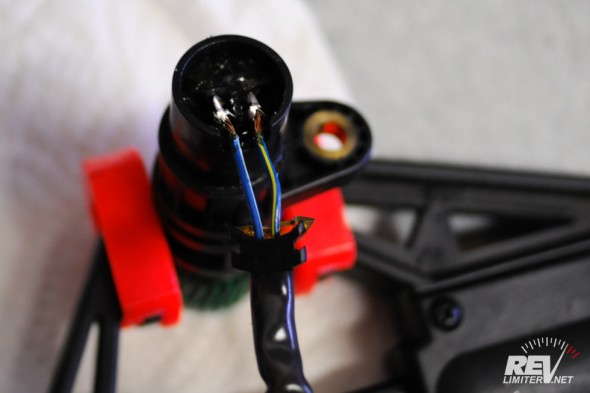
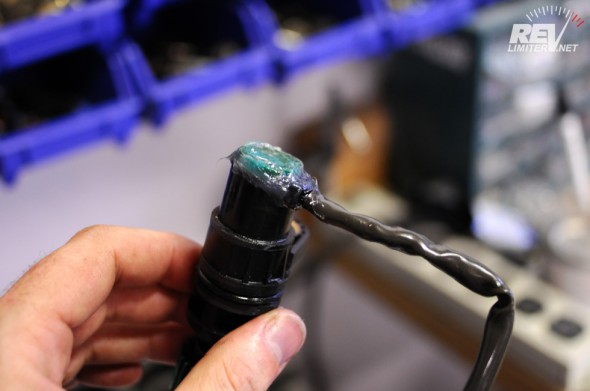




I little off subject, but what jack stand “hats” are you using?
There must be some sort of slot in the “hat”.
Keep up the great work. I have a slew of your products on my upgrade list.
Chris
Those are just the pads that came with my ESCO stands. They’re huge, the size of a standard jack pad.
http://revlimiter.net/blog/2010/07/mega-jack-stand-review-1/
No slot. They’re soft rubber. Sharka has sat on them for months at a time with no damage. They are the most incredible stand I’ve ever handled. They are the very definition of stable.
Thank god you fixed this! Now we can finally trade Flipper for Bucky!
Now that Flipper has those really sweet wheels… hmm…
[…] The little generator in your transmission is going bad. NBs have those instead of cables. http://revlimiter.net/blog/2012/09/d…eedometer-fix/ You can either remove and resolder yours or you can remove the bad one and install a new one. […]
revlimiter,
Great instructions and the pics really help. Headed out to do this now.
Got it done. Took about 2 hours from start to finish, and most of that time was spent allowing the silicone to dry. Very good instructions. Appreciate it very much. Saved myself and smooth $175
AWESOME! Glad I could help out. And I hope your repair holds for a while. I think even if I have to redo this every few years, it’s worth it over buying a new unit that would also break.
Nice write up. You can get second hand senders from about $20. Handy if you are not into soldering.
I changed mine because you need to if you change the diff ratios.
Cheers from downunder.
Hmmm… not a bad idea! I’d not thought about a junkyard sender. I’d be hesitant to put that in without making sure the wires were solidly connected though.
Revlimiter, thank you for adding your pictures to my thread on this subject in the DIY section of ClubRoadster. That thread got another reply today from someone who followed the instructions and got his speedo working again. I don’t know if you have a better camera than my craptastic Sony or you are simply a better photographer (both equally likely), but your pictures certainly clarify things a lot. BTW my Sony camera has been put out to pasture and replaced by a Canon. When I do another DIY thread, it may look as good as yours (I hope). Keep up the good work!
Thank YOU for the thread!!! It saved me a few hundred bucks. And glad you didn’t mind me adding some pix to it.
And glad you didn’t mind me adding some pix to it.
I think the pix in this post were from a Nikon D300. Not the best camera ever, but a decent one. I put nearly 70,000 shots through it before I moved onto another. Yes. 70k. heh.